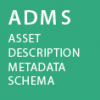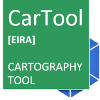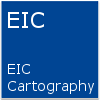Recommendation 23 | Interoperability layer: Interoperability governance
Consult relevant catalogues of standards, specifications and guidelines at national and EU level, in accordance with your NIF and relevant DIFs, when procuring and developing ICT solutions.
Solutions
| List of all available solutions that implement this recommendation |
|---|

|
The ADMS data standard can be used by public administrations with the need for a structure approach to metadata management. |

|
Being a list of assessments, the library acts as a catalogue of technical specifications. |

|
CAMSS List of Standards can be consulted by MS when procuring or developing ICT solutions. |

|
Using a common assessment method for technical specifications, CAMSSaaS provides guidelines when selecting ICT standards. |

|
CAMSS tools provides practical guidance on selecting ICT standards. |

|
Using a common assessment method for technical specifications, CAMSSaaS provides guidelines when selecting ICT standards. |

|
CarTool aids its users in the selection process of standards by giving them access to the list of proposed interoperability standards and specifications. |

|
Users interested in using Core Vocabularies can select from core vocabularies that are most useful to their needs. The Core Vocabularies also contain a list of standard syntaxes that have mappings to the Core Vocabularies. |

|
eArchiving technical specifications describe in detail the interoperable and open formats for packaging data and metadata for transfer to archival repositories (E-ARK SIP), for the preservation over extended periods (E-ARK AIP) and the reuse of archived content (E-ARK DIP). The most common principles and requirements are presented separately within the E-ARK Common Specification for Information Packages. |

|
AS4 is one of the standards the Member States are encouraged to use. Hence, by using it, they by default are consulting European level catalogues of standards. |

|
By using the EIRA library of interoperability specifications, public officials are essentially consulting a solution catalogue. |

|
EIC provides a list of interoperability solutions which can be consulted by public administrations when selecting ICT solutions. |

Location Framework Blueprint
|
EULF Blueprint Recommendation 5 recommends using a standards-based approach in the procurement of location data and related services in line with broader ICT standards-based procurement. More detailed guidance is also available on public procurement of geospatial technologies (https://joinup.ec.europa.eu/collection/european-union-location-framewor…). As part of the implementation of recommendation 12, the EULF Blueprint encourages Member States to use open standards and to consult catalogues of recommended open standards both at national and international level. |

|
By using the technical specifications for legal power and mandates, public officials at national public administrations are using consulting and a European standard, hence helping to ensuring semantic interoperability across borders. |

|
The services and software offered in the catalogue provide statistical offices at national level with a common reference architecture to describe statistical data. The common standard of these services and specifications is maintained collaboratively under the umbrella of the UN ECE. |

|
The Re3gistry software also manages the registers of the INSPIRE Registry. These systems support the implementation of the INSPIRE Directive by providing free access to over 5 000 reference codes in 23 languages that can be accessed and consulted by all public administrators. |

|
By consulting the registry of registers, public officials are consulting a catalogue and choosing the most appropriate approach for them, hence improving cross border and cross sector interoperability. |

|
By consulting TES Cartography, public officials are accessing a repository (a catalogue) of solutions, which are described using a common standard and modelled against EIRA. |
|
IMAPS solution v1.2 |
Question B3 of the Service Management section of the IMAPS questionnaire assesses whether a public administration took into account the EIF recommendations in the design of its digital public service that is interoperable with other public services. This ensures that the administration is leveraging best practices and designs a digital public service that is interoperable with other public services. Furthermore, question B4 of the Service Management section of the IMAPS questionnaire assesses to which extent the digital public service is compliant with the EIRA views (Legal, Organisational, Semantic, and Technical). |
|
LIMAPS v1.0.0 |
Question D6 of the Service Delivery section of the LIMAPS questionnaire assesses how the public service manifests its legal behavioural interoperability performance towards its end-users, by assessing if the legal mandate of the delivered public service is aligned with the EIF principles such as transparency, reusability, privacy, etc. Furthermore, question C5 of the Service Consumption section of the LIMAPS questionnaire assesses to what extent the legal mandates of the consumed client services are aligned with the EIF principles. |

SIMAPS solution v1.0.0 |
Question D2 of the Service Delivery section of the SIMAPS questionnaire assesses at what extent the public service owners undertake activities towards establishing open data semantically aligned at national or EU level. |

TIMAPS solution v1.0.0 |
Question D3 of the Service Delivery section of the TIMAPS questionnaire assesses whether core vocabularies are used within a public service to exchange data, information and knowledge among existing information systems. |





